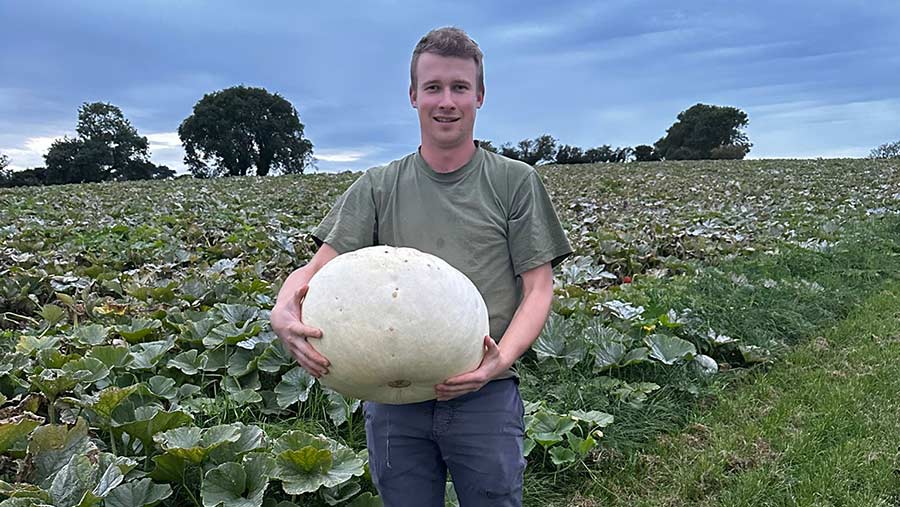Farmer Focus: July and August rain sees bumper pumpkin crop
 © Emily Fleur
© Emily Fleur With combing wrapped up, there is just one crop left to harvest – pumpkins. So, we are relying once again on some drier weather in October to get this under way in enjoyable conditions.
The one benefit to the July and August rain has been pumpkin size. Being about 90% water, they need a lot of this to bulk up to the desired size our customers want.
So, in contrast to last year, we have a cracking crop. Plants didn’t wilt or abort flowers like the previous summer so we should be in for a good campaign – mother nature depending.
See also: How arable farmers can introduce SFI 2023’s no insecticide option
But in typical farming fashion, it’s not all been fruitful. The damp conditions have increased the level of mildew and rot infections with what feels like a larger percentage of rot than we have seen before.
Mildew has been creeping from the leaves down the stems onto the growing point of the pumpkins with the slug damage enabling the rot to get in. Fortunately, we seem to have enough out there to weather the losses. I think…
The squash seems to be relatively unaffected and much hardier, much less or no rot accruing at all, so these vibrant coloured ones should be in plentiful supply and reduce the risk of growing straight pumpkins from season to season. It feels a little bit like growing turnips versus winter OSR this autumn.
Turnips in our cover crops have seemed to fly away with the moisture, no flea beetles, slugs, turnip sawflies, root flies or winter stem weevils to worry about, in contrast to its cousin oilseed rape, which seems to get all of the above.
The other species we have sown are also flying away – the buckwheat is now in full flower, with the phacelia, vetch and clovers shin to knee high, both above and below ground.
Drilling behind winter barley seems to be by far the best slot to get the full value out of the cost of seed and drilling.
So we look forward to an Indian summer, to wrap up the last of this year’s crops.


